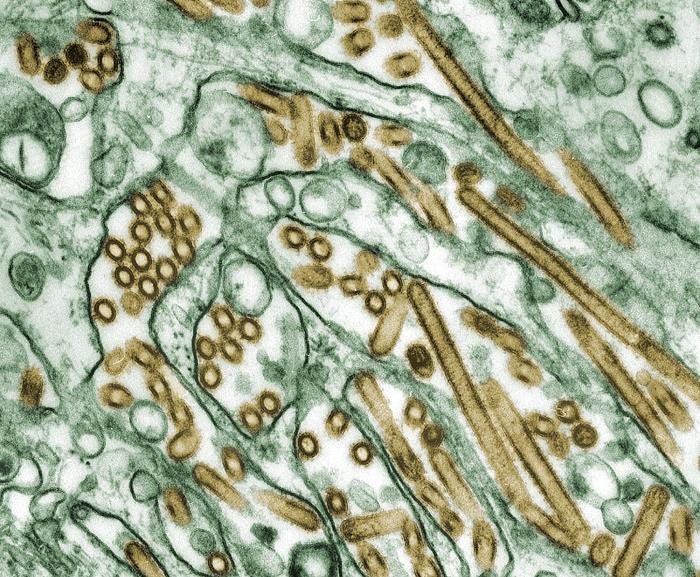The Cambodia Ministry of Health (MOH) has reported two new human H5N1 avian influenza cases in the past week:
The Eighth case: Last week they reported on a 4-year-old boy confirmed with H5N1 bird flu virus from Chrung Popel village, Meam commune, Romeas Hek district, Svay Rieng province.
The boy presented with a fever, a cough, tiredness, difficulty breathing and drowsiness. The patient's condition has improved and he is being treated in intensive care.
According to the investigation, about 12 days before the onset of illness in the village and at home, the boy touched and held the dead chickens.
The Ninth case: This week, MOH reported on a 16-year-old girl who had been been confirmed as H5N1 bird flu virus (H5N1) positive. She resided in Chamkar Leav village, Prey Koki commune, Chantrea district, Svay Rieng province. The girl had a fever, cough, sore throat, fatigue, and difficulty breathing.
Currently, the patient's condition is serious and is being treated in intensive care. According to the investigation, about four days before the onset of the illness at the neighbor's house and the patient's house, there were nine dead chickens for cooking, which the girl touched and held the dead chickens.
The National and Sub-National Emergency Response Team of the Ministry of Health has been cooperating with the working groups of the Ministry of Agriculture, Forestry and Fisheries and the Ministry of Environment, local authorities at all levels to actively investigate the outbreak of bird flu and respond. According to technical methods and protocols, continue to search for sources of transmission in both animals and humans, and continue to search for suspected cases and exposure to prevent transmission to others in the community, as well as distribute Tamillu to close contacts. And conduct health education campaigns for the people in the above-mentioned villages.
According to the World Health Organization, H5N1 is one of several influenza viruses that causes a highly infectious respiratory disease in birds called avian influenza (or "bird flu"). Infections in mammals, including humans, have also been documented.
H5N1 influenza virus infection can cause a range of diseases in humans, from mild to severe and in some cases, it can even be fatal. Symptoms reported have primarily been respiratory, but conjunctivitis and other non-respiratory symptoms have also been reported. There have also been a few detections of A(H5N1) virus in persons who were exposed to infected animals or their environments but who did not show any symptoms.
Subscribe to Outbreak News TV on YouTube
Almost all cases of H5N1 virus infection in people have been associated with close contact with infected live or dead birds, or H5N1-contaminated environments, for example live bird markets. There have been some instances of spread from infected mammals to humans as well. While there may have been some cases that were not detected, the virus does not seem to easily infect humans or spread from person to person, based on the current knowledge and understanding.
Since 2003, about 900 human cases have been reported globally, with approximately half the cases being fatal.





